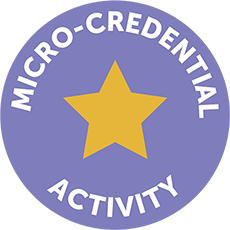Requirements and Specifications Template
Overview
In this section you will draft requirements and specifications for your district’s use case. The needs you define at this point, and the priorities you attach to them, will be used during the next phase of the overall process: implementation planning.
Functional requirements can be inserted into each of the requirements identified in your Needs Assessment. They should describe how a product will work entirely from the user’s perspective.
A functional requirement states in detail what exactly the interoperable solution should be expected to do (rather than what your district should be able to do).
It is recommended that details related to current processes and systems be included in the functional requirements. This should cover the type of information the systems are responsible for managing as well as a high-level description of the processes and procedures utilized by the users to maintain the data.
Because the integration technology will change these processes and procedures by streamlining the flow of information, it is critical that all of the user’s current responsibilities are well understood.
The functional requirements should be developed with direct alignment to the requirements. It should describe the characteristics or functions to be carried out within the data integration. Include all of the information that you feel comfortable with; but don’t feel like you must include everything.
Read more about defining requirements by reading this article from the SIF Implementation Planning Toolkit. This is also located in your resources folder.
Next, watch the following video by the Ed-Fi Academy about categories of requirements. Keep in mind the video references a workbook specific to Ed-fi Academy and is not the same at the Data Readiness Module workbook.

Locate and use the Requirements and Specifications Templatefrom your resources folder, to transfer your district’s requirements and specifications from the SIF Association’s “Define Requirements” activity. This will allow your district to reference this information later for inclusion in your final project plan and pitch deck.
Review the Data Integration Requirements Definitions as referenced in the SIF Implementation Planning Toolkit article above.
- Identification Number: Each major requirement should be assigned a unique identification number. If there are related sub-requirements, assign those a sub-number (i.e. 3.1.1).
- Description: As you describe each requirement, make sure they are concise and written in such a way that they can be used to test against.
- Priority: Based upon the requirement conventions, assign a value to each requirement. Those statements containing the terms “shall” or “must” are hard requirements and must be met. Requirements that are desirable but not mandatory will contain the term “should.”
- Equity Highlight: Priority identification for subgroups within specialized populations are highly encouraged. For example, students in more restrictive settings vs. students in inclusion settings; disaggregated data for English Language Learners indicating levels 1-4)
- Procedural Impact: If the requirement involves changing policies or procedures, this should be noted here. This will be important because these must be in place and documented prior to deployment.
- Acceptance Plan: To make sure the statement is concise enough to be measurable, describe what user expectations would be to indicate that this requirement has been fulfilled.
- Source(s): Identify where the requirement came from. This may be an individual, group, or external source. It’s important because additional questions may come up later and you will want to follow up with the appropriate individuals.
- Rationale: The supporting rationale for each requirement should be described here. If it is not understood why a need exists, it’s likely the solution may not satisfy it correctly.
Example
| Req ID | Priority | Description |
|---|---|---|
| 1.0 Learner Information Enrollment Data | 1 | The school or college administrators must be able to efficiently share enrollment information with all other departments in the LA that need to know about them in order to provide services. |
| Rationale | The school administrators are the official “owners” of learner enrollment data and the first to know about the entry of a new learner. In order to provide immediate services to new learners, other departments must be aware of their existence as soon as possible. | |
| Source | John Jones, Principal, Newtown School | |
| Procedural Impact | Currently, this information is shared using paper forms as the communication medium. Each department initials the form indicating their awareness of the new enrollment. New procedures will need to be developed for each affected department prior to deployment of the integration. | |
| Acceptance Plan | Individuals responsible for sending and receiving information between systems must be satisfied with the timeliness, quality, and reliability of information. | |
| 1.0.1 Learner Information Enrollment Data Food Services | 1 | The school administrators must be able to share new learner enrollment information with food services. |
| Rationale | The school administrators are the official “owners” of learner enrollment data and the first to know about the entry of a new learner. In order to provide immediate meal services to new learners, food services must be aware of their existence as soon as possible. | |
| Source | Kathy Smith, Head Cook, Newtown School | |
| Procedural Impact | Current procedure has the learner showing up at lunchtime with a paper form from the main office indicating the type of lunch to be served. If the learner is receiving free or reduced lunch, this event can cause embarrassment. Because the food services staff will have access to timely information regarding new learners, new procedures may need to be developed to determine service requirements prior to the child showing up. | |
| Acceptance Plan | Food services staff need to verify that the data was received and consumed appropriately into their system. School administrators and registrars need to know that the data they sent was successfully received and processed. | |